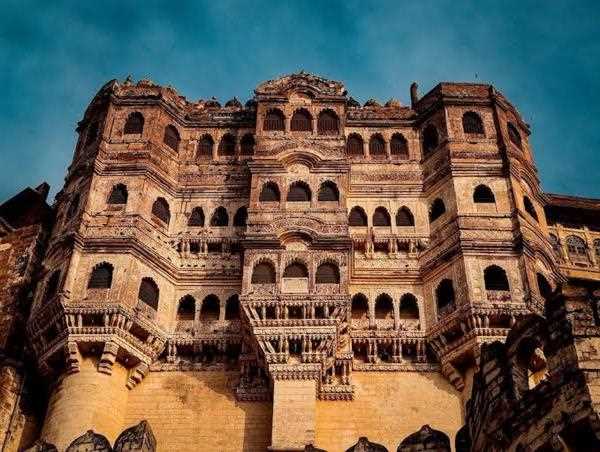 Indian forts are known for their unique architectural design and construction that help maintain a comfortable and cool temperature inside, even during hot summer months. There are several reasons why Indian forts are so cool from the inside when it is hot outside, including:
Indian forts are known for their unique architectural design and construction that help maintain a comfortable and cool temperature inside, even during hot summer months. There are several reasons why Indian forts are so cool from the inside when it is hot outside, including:
- Thick Walls: Indian forts were built with thick walls that were made of stone or mud bricks. The thickness of the walls helps to insulate the interior from the heat outside, keeping the temperature inside cooler.
- Ventilation: Indian forts were designed with large windows and open spaces that allowed for proper ventilation. The windows were placed at strategic locations to allow for a cool breeze to pass through the fort, keeping the inside temperature cool and refreshing.
- Water bodies: Many Indian forts were built near water bodies, such as rivers or lakes. The water bodies helped to cool down the surrounding area, which in turn helped to keep the fort's interior cool as well.
- Courtyards: Indian forts typically have large courtyards that are open to the sky. The open courtyards help to circulate air and allow for natural light to enter the fort. They also provide a cool and shaded area for people to relax in during hot weather.
- Building Materials: The materials used to construct Indian forts, such as stone and mud bricks, have high thermal mass. This means that they absorb heat during the day and release it slowly at night, helping to maintain a steady temperature inside the fort.
- Location: The location of Indian forts was carefully chosen to take advantage of natural features that would help keep the interior cool. For example, forts built on hilltops would benefit from the cooler temperatures at higher altitudes.
In conclusion, Indian forts are designed with several features that help maintain a cool and comfortable temperature inside, even during hot summer months. The thick walls, ventilation, water bodies, courtyards, building materials, and location of the forts all work together to create a cool and refreshing interior environment, making them a marvel of ancient Indian engineering and architecture.
Also Read:- Best trekking destination in India
Also Read:- Top 5 tourist places to visit in India